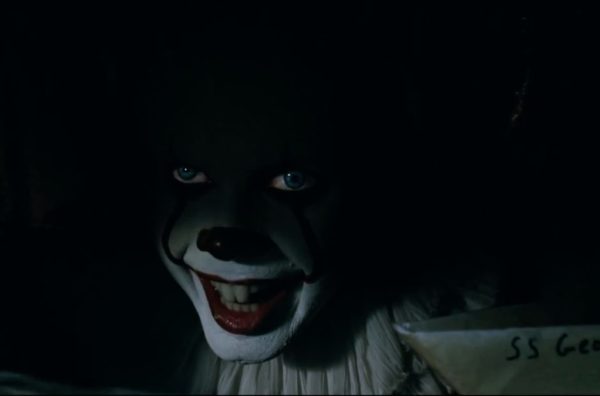Samuel Brace gets ready for Halloween with the 4 Top Horror Moments from 2017 Film and TV…
Halloween is nearly here, and, as is the tradition for websites dedicated to all things film and TV, a healthy dose of horror related content will be yours in which to indulge.
So in between episodes of Stranger Things season 2, perhaps you might like to read what’s on offer here, in particular this very list of the top four horror moments from 2017 film and TV.
There’s been plenty over the course of this very calendar year to keep us on our toes and to send shivers down ones spine, and, as you would expect, a lot of this comes by the way of the traditional horror genre. But we don’t intend to cast our gaze solely in that small corner of the film and television world, after all, horror can be found in a variety of different places.
So, with that being said, we hope you’ll find this list to contain some of what you expect, and perhaps a little of what you don’t, with two horror tinged moments packed with enough dread to scare from both the mediums of television and of film.
Twin Peaks – The Woodsman’s Rampage of 1956
Twin Peaks was always a series that dealt a rather unsettling hand to its loyal viewers and 2017’s return to the show kept true to that trend, providing fans with enough bizarre and frightening imagery to make up for director David Lynch’s long absence from the mainstream space.
None were quite as horrifying, however, as the scenes depicted in black and white during episode eight. Here we experienced America in 1956 as one of those ghastly woodsmen crushed skulls on his way to delivering his bone chilling radio message to the area’s inhabitants.
Twin Peaks, much like the wider works of Lynch, is known for its dream like aesthetic but this episode was purely that of which nightmares are made, and the less said about what crawled down that young girl’s throat the better.
It – Introduction to Pennywise
We all know Pennywise, even those that haven’t read Stephen King’s It or seen the miniseries starring Tim Curry. The image of the evil entity and sometimes clown is one that has permeated the world beyond that of his fictional narrative.
Regardless, the introduction to Bill Skarsgård’s depiction of the being was a memorable one and thoroughly horrific. Some of us knew the grisly end awaiting poor Georgie as he chased his paper boat down the street, but even still, the greeting the boy receives from Pennywise is superbly effective and does a quite tremendous job in setting out the stall for this 2017 adaption.
The moment where little Georgie loses his arm (and thusly his life) to the fiend is the bloody icing on an already macabre cake, and itself more than enough nightmare fuel for audiences to carry home and back to their beds.
Mindhunter – Interview with Richard Speck
Mindhunter isn’t a show replete with horrific imagery or stomach churning violence, not like David Fincher’s earlier work in Seven, but is more closely akin to the director’s work in Zodiac, where an atmosphere of creeping terror and chilling conversation was instead favoured.
But there is a scene here that stands out from the rest, a conversation had between our agents and the notorious Richard Speck. Speck is given his rightful build up in the show and by the time we sit down with him the image of this ghastly individual is suitably engorged in our minds.
It perhaps helps if the viewer is already aware of Speck and his crimes, but Mindhunter does more than a sufficient job if this is not the case, and delivers an intensely creepy scene with the real life villain in appropriately chilling surroundings.
After a number of sessions with the eloquent Edmund Kemper, Speck’s unique brand of evil is quite a shock, and the random nature of his cruelty truly disturbing.
Dunkirk – Farrier’s Capture by the Nazis
Our final entry is the furthest thing away from that of traditional horror but none the less contains the most frightening scenario of any that came before it in this list.
War is always scary and the realistic nature of battle depicted in Christopher Nolan’s Dunkirk is as terrifying as any portrayal cinema has so far attempted. But it’s the final moments of the film that are most forbidding, where we watch Tom Hardy’s Farrier, an RAF pilot, crash down in enemy territory after myriad heroics, to be then captured by the Nazis by the film’s close.
The scene is enhanced by containing the clearest view of the enemy in the film to that point, as the Germans are hidden from sight until the very moment that Hardy is surrounded – ominous is a word that hardly does the imagery justice. And Farrier appearing to be the last Englishman behind enemy lines, only elevates the terror further, as does the legendary Churchill speech spoken over the images on screen.
WWII was one of the most frightening times in British history, and Farrier’s capture conveyed the horror surely felt in the most palpable way possible.
Samuel Brace















